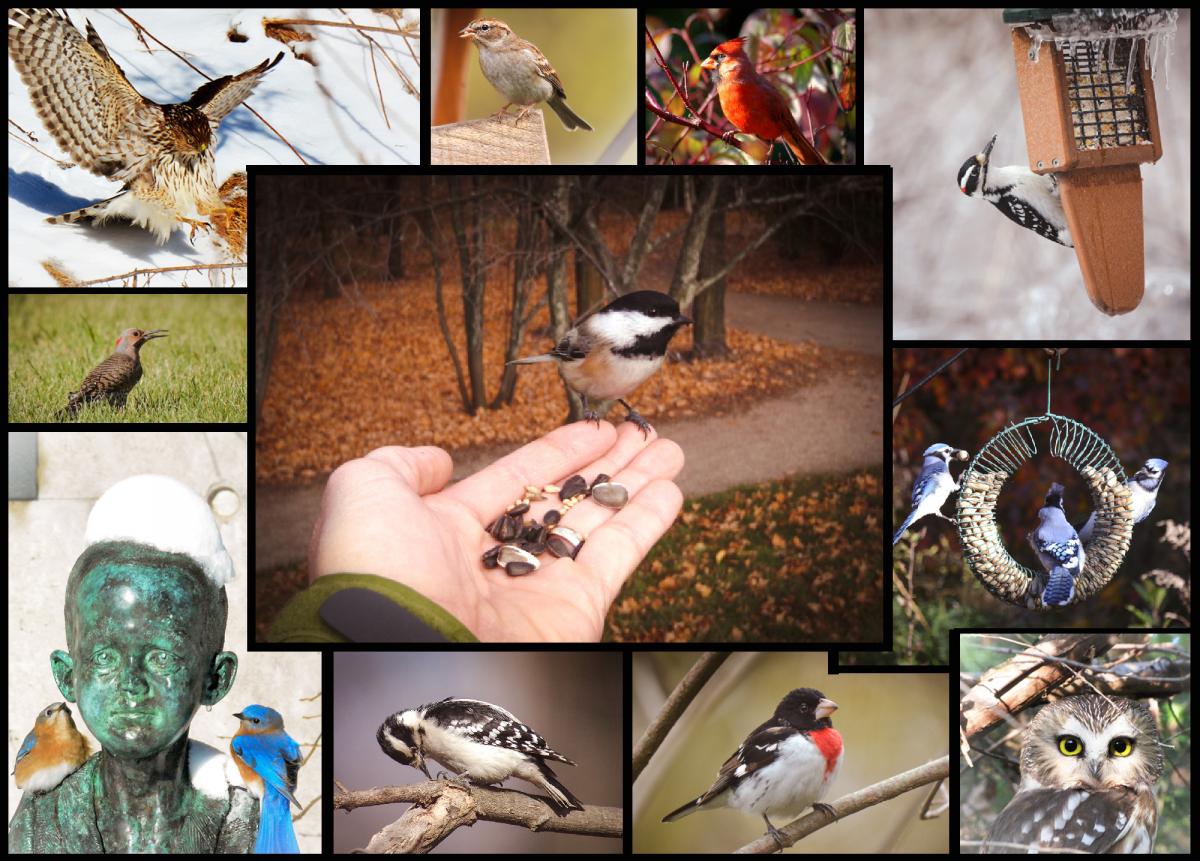Project Feederwatch

Be a citizen scientist! This long running program is a great way to improve your observational skills and contribute real data to a study being conducted right across the continent. For more information, go to the feederwatch website.
Sessions run on every Tuesday and/or Wednesday, Thursday and/or Friday, and Saturday and/or Sunday the feeder outside The Arboretum Centre and Gosling Wildlife Gardens
Counts run from mid-November to mid-April every year. Sessions are lead by student volunteers.

Instructions/rules:
- Correctly ID the birds you see – use a field guide if needed (there is a small one you can borrow from us if you'd like).
- The birds don’t have to be “on” the feeder to be counted, as long as they are within the feeder ecosystem/site. For example, if there is a bird sitting in an adjacent tree, or on the ground, or flying within the feeder site, those all count as well! Predator birds like hawks count, too, since they are interested in the small birds at the feeder site.
- Don’t count birds that are simply flying overhead, like a Canadian Goose or Sandhill Crane.
- You count how many birds you can see at ONE TIME. Not how many you saw in total for the time you were there. Why? Because if you count one robin, and then 20 minutes later you count a second robin, there is a possibility that you just counted the same robin twice. Therefore, you must see all the birds to count them (or hear one behind you while looking at two others for a sighting of 3, for example).
- If you have a first sighting of 3 chickadees, and then at a second sighting you see 4 chickadees, do not add these numbers. But keep the 4 as your latest tally because you just beat your last sighting of 3. Think of it as obtaining your highest score.
- Sexual dimorphism can’t be a loop hole to the above point. So if you saw a male cardinal, and then you saw a female cardinal 20 minutes later, you cannot count that as 2 cardinal. It still counts as only 1 sighting because you technically only saw one at a time. Why do this when you know the male and female are not the same bird? For statistical consistency. Chickadees, for example, cannot be sexed, so if you can’t do the male/female cheat with chickadees, then you can’t do it with cardinals either.
If you have any questions talk to Michelle (beltranm@uoguelph.ca). We will also let you borrow binoculars or field guides if you need them. And if you are ever around and see an uncommon bird, be sure to come in and tell us!